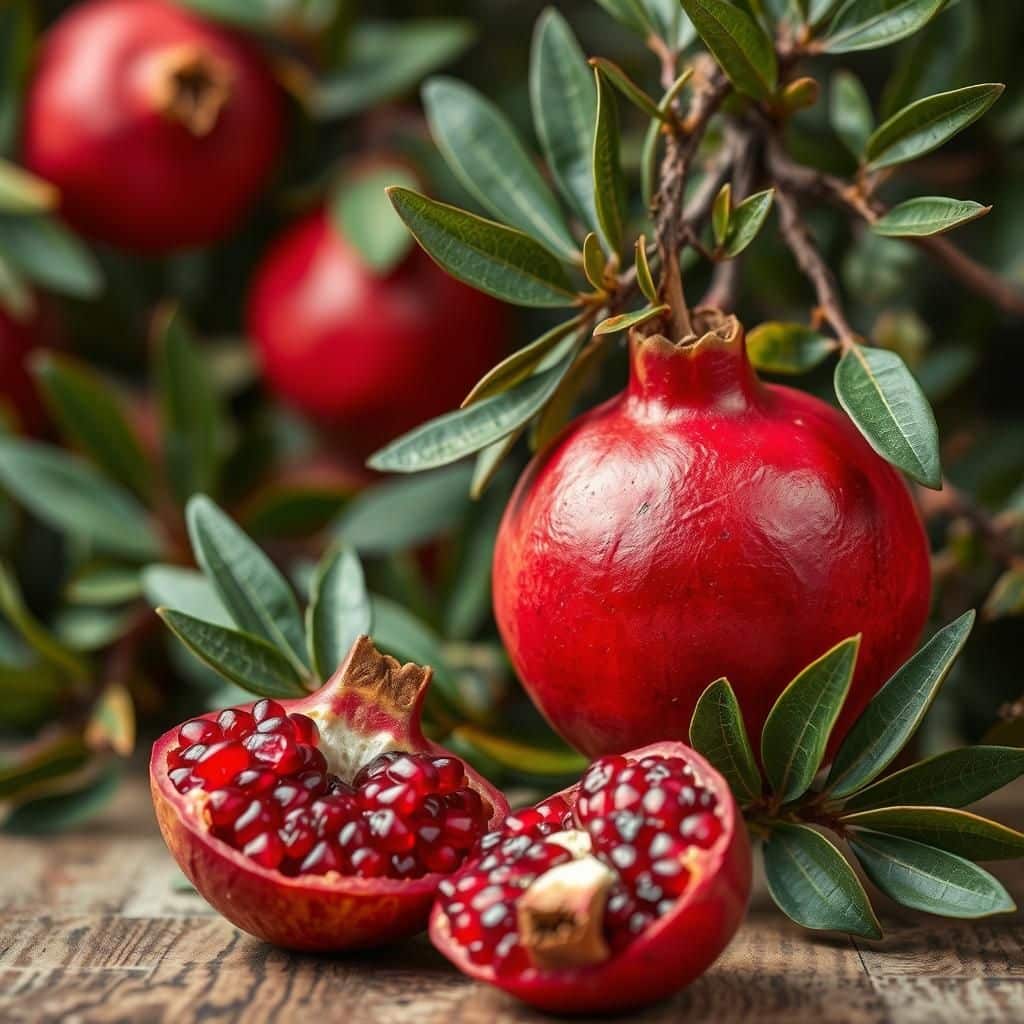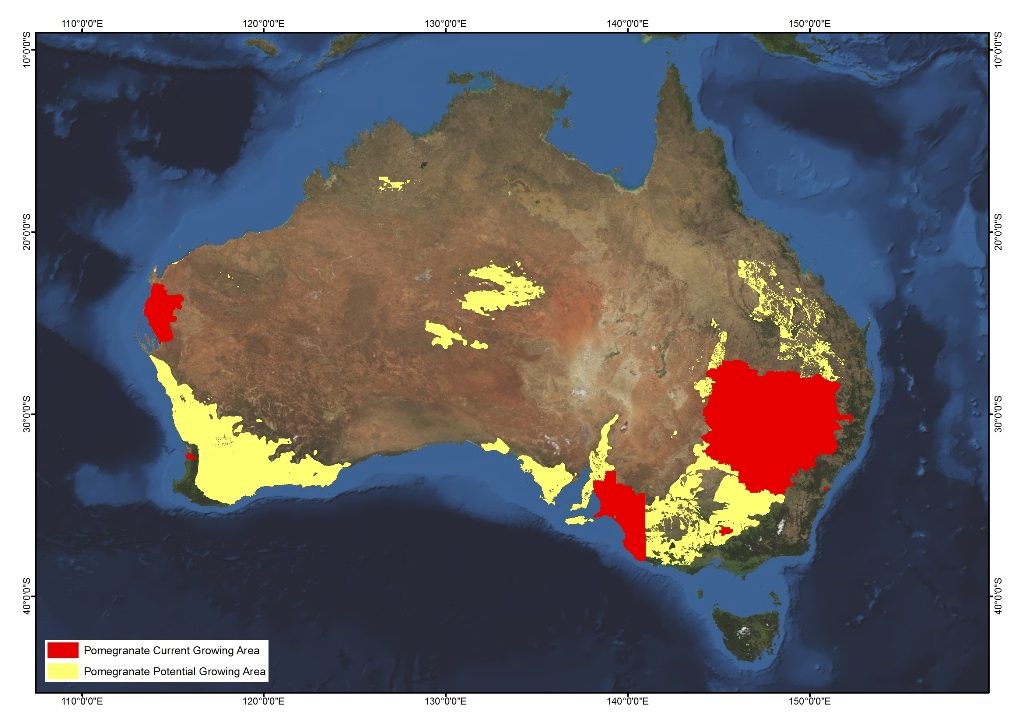Everything You Need to Know About Pomegranate in Season Australia

Pomegranates are a vibrant and nutritious fruit enjoyed by many, particularly when they are in season in Australia. Known for their jewel-like seeds and health benefits, pomegranates can add a burst of flavor and color to various dishes. This article provides essential insights into pomegranate season in Australia, including the ideal harvesting times, tips for selection and storage, and creative ways to incorporate this superfruit into your meals. Whether you’re a long-time fan or a newcomer to this delightful fruit, understanding its seasonal availability will enhance your culinary experience and appreciation for pomegranates.
Pomegranate Season in Australia
The pomegranate season in Australia typically runs from late summer to early autumn, specifically from February to May. This timing aligns with the plant's growing conditions in regions where the climate is warm and temperate, such as in New South Wales, Queensland, and parts of Western Australia. During this period, Australian pomegranates are at their peak ripeness, offering a burst of flavor and vibrant color. Many consumers look forward to this time of year to enjoy fresh pomegranates in salads, desserts, and juices, as well as to explore their numerous health benefits, including high levels of antioxidants and other essential nutrients.
Growing Regions for Pomegranates in Australia
Pomegranates are primarily grown in New South Wales and Queensland, where the subtropical climate is ideal for their development. The regions of Murray Valley and Sydney are known for producing the best quality pomegranates. Additionally, Western Australia has started to emerge as a notable producer, taking advantage of its hot summers. The soil type and climatic conditions in these areas are conducive to the successful cultivation of pomegranates, which require long growing seasons and plenty of sunlight.
Nutritional Benefits of Pomegranates
Pomegranates are a powerhouse of nutrients and antioxidants, which provide numerous health benefits. They are rich in vitamin C, vitamin K, and various B vitamins, making them beneficial for immune support and overall health. Additionally, the high levels of polyphenols and flavonoids in pomegranates are known to reduce inflammation and support heart health by improving cholesterol levels. Incorporating pomegranates into one's diet can also contribute to better digestive health.
Harvesting Pomegranates
The harvesting process for pomegranates in Australia involves careful selection to ensure that only the ripest fruits are picked. The fruits are typically harvested by hand to avoid damage to both the pomegranates and the plants. Farmers usually rely on color and firmness to determine the best time to harvest. Once gathered, the fruits are sorted and packed for distribution, ensuring they are in optimal condition for consumers. This hands-on approach reflects the dedication of Australian farmers in providing high-quality produce.
Uses of Pomegranates in Culinary Arts
Pomegranates are incredibly versatile in the kitchen, lending their unique flavor to a variety of dishes. They can be eaten raw, juiced, or used as a garnish, and are commonly added to salads, desserts, and even main courses. The seeds, often referred to as arils, add a sweet-tart flavor and a pop of texture, making them a favorite ingredient in many cuisines. Chefs also appreciate using pomegranate juice for marinades or reductions, enhancing both taste and presentation.
See also:
Market Trends for Pomegranates in Australia
The demand for pomegranates in Australia has been steadily increasing, driven by growing awareness of their health benefits and versatility in cooking. With a rise in interest in superfoods, pomegranates are becoming more popular among health-conscious consumers. Retailers have noticed this trend, leading to an increase in pomegranate availability, both fresh and in value-added products like juices and sauces. As Australian production expands, the market is likely to continue evolving, catering to the rising consumer interest.
| Region | Harvest Months | Nutritional Benefits |
|---|---|---|
| New South Wales | February - May | High in antioxidants |
| Queensland | February - May | Rich in vitamins |
| Western Australia | February - May | Supports heart health |
Where do pomegranates come from in Australia?

Pomegranates in Australia primarily originate from regions that provide a suitable climate for their growth. Initially introduced to Australia in the early 19th century, they have since been cultivated in various states, especially in areas with warm and dry conditions. The most significant production regions for pomegranates in Australia include:
- New South Wales: The warm climate and fertile soil make it an ideal place for pomegranate cultivation.
- Victoria: Known for its agricultural diversity, Victoria has seen an increase in pomegranate farms, particularly in the northern part of the state.
- South Australia: The Mediterranean climate and exceptional soil conditions support the growth of pomegranate orchards.
Here are some detailed discussions on related aspects of pomegranate cultivation in Australia.
The Climate Requirements for Pomegranates
Pomegranates thrive in a warm, dry Mediterranean climate. They require a significant amount of sunlight and well-drained soil to grow effectively. In Australia, the following climatic conditions support healthy pomegranate production:
See also:
- Hot summers with minimal rainfall.
- Cold winters, which help the trees to rest and prepare for the next growing season.
- Low humidity levels that reduce the risk of diseases and pests.
The Varieties of Pomegranates Grown in Australia
Several varieties of pomegranates have been successfully cultivated in Australia, each known for unique flavor profiles and textures. The popular varieties include:
- Wonderful: The most common variety, known for its sweet-tart taste and deep red color.
- Angel Red: Favored for its juicy seeds and vibrant color, it tends to be sweeter than the Wonderful variety.
- Parfianka: Noted for its balance of sweetness and acidity, this variety is gaining popularity among growers.
Pomegranate Farm Practices in Australia
In Australia, pomegranate farmers employ specific agricultural practices to improve yield and quality. These practices include:
- Drip irrigation systems to manage water effectively.
- Soil amendments to enhance nutrient content.
- Regular pruning to shape the trees and promote fruit production.
Health Benefits of Australian Pomegranates
Pomegranates are renowned not only for their flavor but also for their various health benefits. Australian pomegranates offer:
- High levels of antioxidants, which are beneficial in reducing oxidative stress.
- Anti-inflammatory properties that may help prevent chronic diseases.
- Richness in vitamins and minerals, contributing to overall health.
The Economic Impact of Pomegranate Cultivation
Pomegranate farming has a growing economic impact in Australia. Key points include:
- Providing employment opportunities in rural areas.
- Contributing to the local and national economy through exports.
- Encouraging innovation in horticultural practices and sustainability.
Questions from Our Readers
When is pomegranate season in Australia?
Pomegranate season in Australia typically runs from March to May, depending on the region. During this time, the fruit reaches its peak ripeness and is ready for harvesting, offering the best flavor and quality.
Where can I buy fresh pomegranates in Australia?
You can find fresh pomegranates at various local markets, grocery stores, and specialty fruit shops across Australia, especially during the harvest season. Online retailers may also offer seasonal sourcing from local growers.
See also:
What are the health benefits of pomegranates?
Pomegranates are rich in antioxidants, vitamins, and minerals, providing numerous health benefits, including improved heart health, reduced inflammation, and enhanced memory function. Consuming pomegranates regularly can contribute to an overall healthy diet.
How should pomegranates be stored to maintain freshness?
To keep pomegranates fresh, store them in a cool, dry place, or in the fridge if you want to extend their shelf life. Uncut pomegranates can last for several weeks when stored correctly, while arils should be kept in an airtight container for up to a week.

If you want to read more articles like Everything You Need to Know About Pomegranate in Season Australia, we recommend you check out our Seeds category.
Leave a Reply
Related Articles